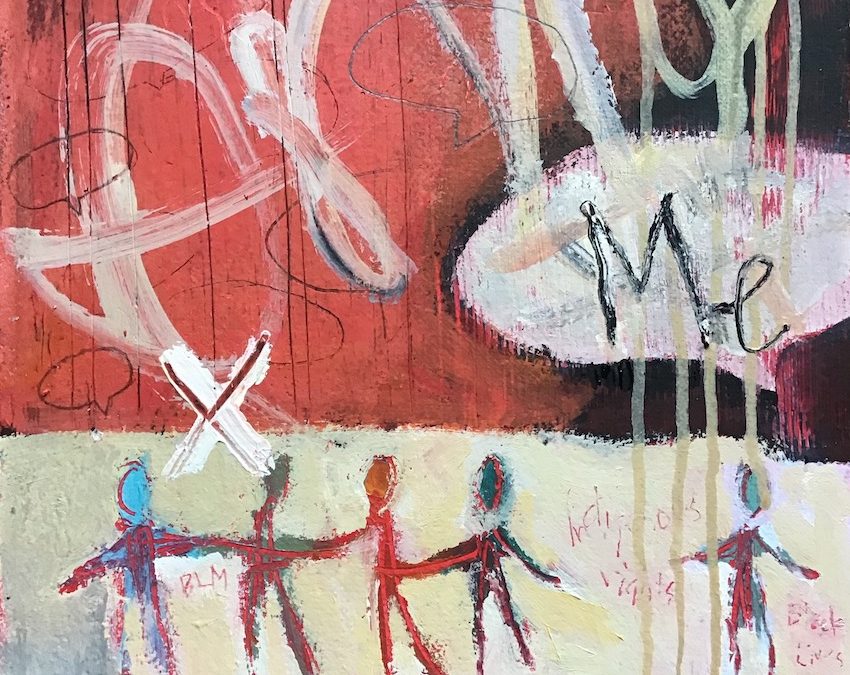I have been trying to educate myself on my own biases as well as how racism is built into our cultural norms and into our systems of governance. Ignorance is a chain around our necks.
There is so much I understand better now after following and learning from Black and Indigenous thought leaders and yet still so much that I can’t grasp that sends me into a world of confusion and despair.
Racism takes a different form in Canada, where I live, than in the US. Some Canadians like to think we are immune, but that is sadly far from the truth. Our brand of inequity is masked by politeness and embedded in our colonial roots. For the most part we are blind to it if we are white. Because we don’t experience it, we think that it can’t exist.
Our biggest shame is what colonization has done to the First People on whose stolen land we live. People argue that we can’t change history. The trouble is we perpetuate the impact of that history everyday in our policies.
I feel the pain of this deeply, but I become inarticulate when I am talking to someone who buys into the myths colonization has created.
This painting speaks about the white folks who cannot see beyond themselves to see the need to combat a system that is not working for all. This is about those who can’t help but centre themselves in the conversation.
I’m not racist.
I have Black friends.
I visited a First Nations Community once on a summer job.
I, I, I. It isn’t about you. It isn’t about you being good or bad. It is about the systems that compliance and/or indifference supports. It is also about the fact that if you are white you can ignore this conversation entirely and go on with your life thinking only of I, I, I, (me, me , me) and the ones that matter to you.
And worse in a way, if you think you are “woke” and then still make the conversation about you or take centre stage on topics of race or social justice when a Black or Indigenous person stands in the wings.
Here is an example of how it can be done by producers and actors in two animated TV shows, “Missy” and “Central Park”.
“We sincerely apologize for and regret our original decision to cast a white actor to voice a biracial character. We made a mistake, took our privilege for granted, and we’re working hard to do better moving forward. We are proud of the representation that Missy has offered cerebral, sensitive women of color, and we plan to continue that representation and further grow Missy’s character as we recast a new Black actor to play her.”
Shortly after Slate’s announcement, the Central Park team announced Bell’s step down from the role of Molly — also a young character who has a White mother and Black father.
“This is a time to acknowledge our acts of complicity. Here is one of mine,” Bell wrote on her Instagram post sharing the production team’s statement. “Playing the character of Molly on Central Park shows a lack of awareness of my pervasive privilege. Casting a mixed race character with a white actress undermines the specificity of the mixed race and Black American experience.”
There are many layers of paint on this piece even though it is on paper. The figures and marks are crude and raw which is how this topic leaves me feeling. I was hoping to achieve and edginess that grabbed attention but yet was cool enough to keep people wanting to engage.

